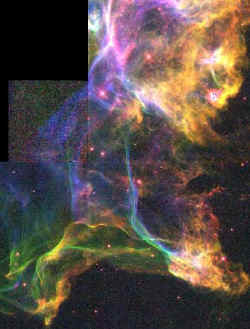Electrons Quit Ignoring the Nucleus

Usually the electrons of an atom have little regard for the internal affairs of the nucleus. The nucleus typically makes transitions from one state to another with energies of millions of eV, whereas most electronic transitions occur at mere tens of eV or less. Recently, two experiments have bridged this gap between electrons and nucleus in dramatic ways. Reporting in the 28 August PRL, physicists in Japan have excited a nucleus via the atomic electrons, while a European collaboration publishing in the August Physical Review C has obtained direct evidence of the reverse process. In both cases, the energies of the nuclear transitions and electronic transitions must be closely matched.
Since the early 1970s, several experimental groups have searched for nuclear excitation by electronic transitions (NEET), with some claims of success, but the field has been riddled with controversy. In the new experiments, a collaboration at the Japan Synchrotron Radiation Research Institute in Hyogo used highly monochromatic, 50-picosecond x-ray pulses to excite electrons in gold-197 atoms. The electrons in turn excited their nuclei, which then decayed within nanoseconds. The team detected electrons ejected from the atoms by the nuclear decay.
The Japanese researchers’ approach avoided problems that had plagued past experiments, which excited the nuclei with the blunt instrument of electron bombardment or broadband x-ray irradiation. Another important improvement was the use of a detector with sufficient time resolution to ignore the immediate explosion of radiation following the x-ray pulse and cleanly spot the electrons emitted several nanoseconds later. Given NEET’s controversial history, skepticism might be expected, but Rolf Siemssen of Argonne National Laboratory in Illinois says that the new work is very convincing. “This is the first clear evidence for NEET,” he says. “The technique they’ve used is very pretty–they can directly measure these small processes in the presence of an enormous photon flux.”
Another group of researchers has bagged the reverse process–the transfer of nuclear excitation energy into electronic states of an atom, without ejecting the excited electron. It’s called “bound state internal conversion” or BIC. In conventional internal conversion, an excited nucleus decays by handing its energy directly over to an inner shell electron, which is usually sent flying away from the atom. (The Japanese collaboration used this effect to detect NEET.) Jean-Francois Chemin of the French Center for Nuclear Studies in Bordeaux-Gradignan, a member of the European collaboration, explains that, in order to retain the excited electron, the nuclear excitation energy must match the spacing between electronic levels. “The possible excitation energies in an atom form a discrete set, and so BIC can only be achieved in very special situations.”
The trick to seeing BIC was to look at highly ionized atoms, says Chemin. “The excitation energy of the nucleus is fixed, but the excitation energy of the electron can be adjusted by changing the charge state of the atom.” At the GANIL heavy ion accelerator in Caen, France, the researchers slammed 38+ ions of tellurium-125 into a target of thallium, which stripped electrons off and excited the nuclei to an energy level of 35 keV. The team detected delayed x rays characteristic of electrons dropping into vacant levels created by BIC.
Apart from the intrinsic interest in watching electrons and the nucleus in more intimate contact, there are astrophysical implications of BIC and NEET. In hot astrophysical plasmas, electronic processes may influence nuclear events, according to Chemin, and the effects can be large. As a result, processes like BIC and NEET may well alter what we presently know about the history of chemical element formation in the universe.
–David Voss
David Voss is an editor for Physics.


